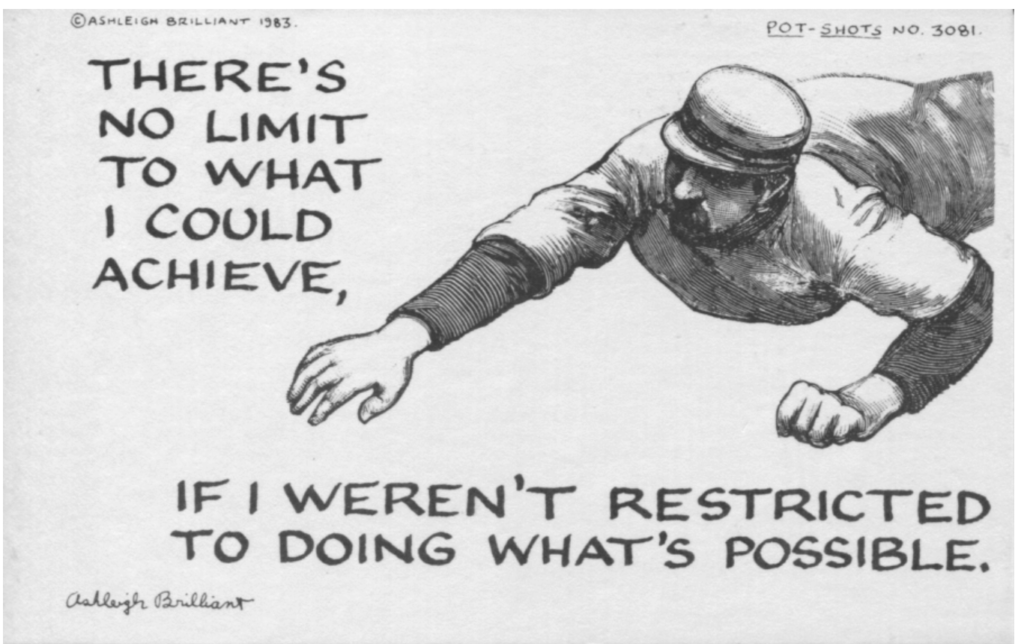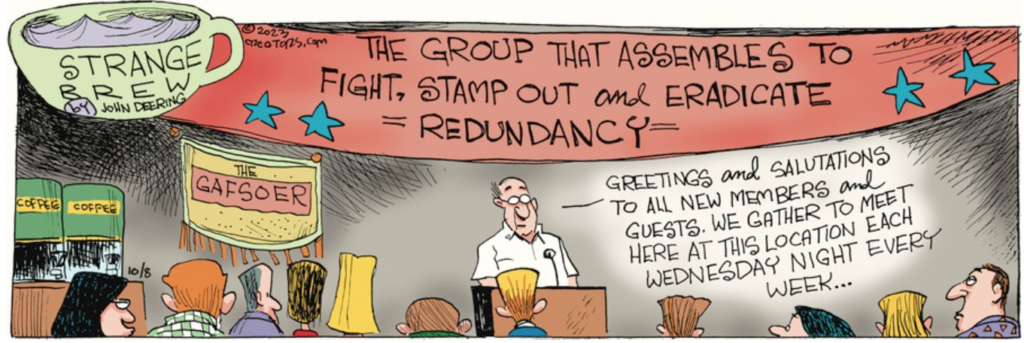Redundancy in Writing is not Good
So the writer changed it a bit to make it officially not redundant. See the caption under the picture.
“Humming” instead of “hemming.” (You know that “hemming and hawing” means indecisive, right?) I guess suggesting a redundancy and then not actually doing it is humorous…
Subscribe to this blog's RSS feed
A Fairly Common Redundancy
Redundancy is when you unnecessarily include a word that means the same thing as another word in the sentence. I say this myself sometimes, but usually in the reverse order. Last panel.
So do you say “little tiny” or “tiny little”?
One Good, One Bad List
First panel. This sentence has two lists of adjectives. What’s wrong with the bad one? I speak of grammar, of course.
You’re right (I hope)! The second list is redundant. Both words mean the same thing. The first list has words with (technically) different meanings, so that list is grammatically okay.
Redundancy is not Quite Tautology
Huh?
- Redundancy is when you repeat something and the repeat is unnecessary. So “return back” is a redundancy. “Back” is redundant because it’s unnecessary; all you need is “return.”
- A Tautology is when you say something twice. It refers to the repetition, not to whether the two (or more) words have an unnecessary word. Yes, the distinction is subtle.
Here’s a good example of a tautology. If you think about it, the two parts say the same thing! (no limit=weren’t restricted)
Of course, the not-obvious tautology is what makes the comic funny.
Not Practicing What They Preach
One of my five main principles in writing is to be concise. (The name for the error of not being concise is to be pleonastic, which is a fancy word for “wordiness.”) So here:
And one type of pleonasm is being redundant, which is when the extra word or words mean the same thing as the word you actually need. Don’t do this!





